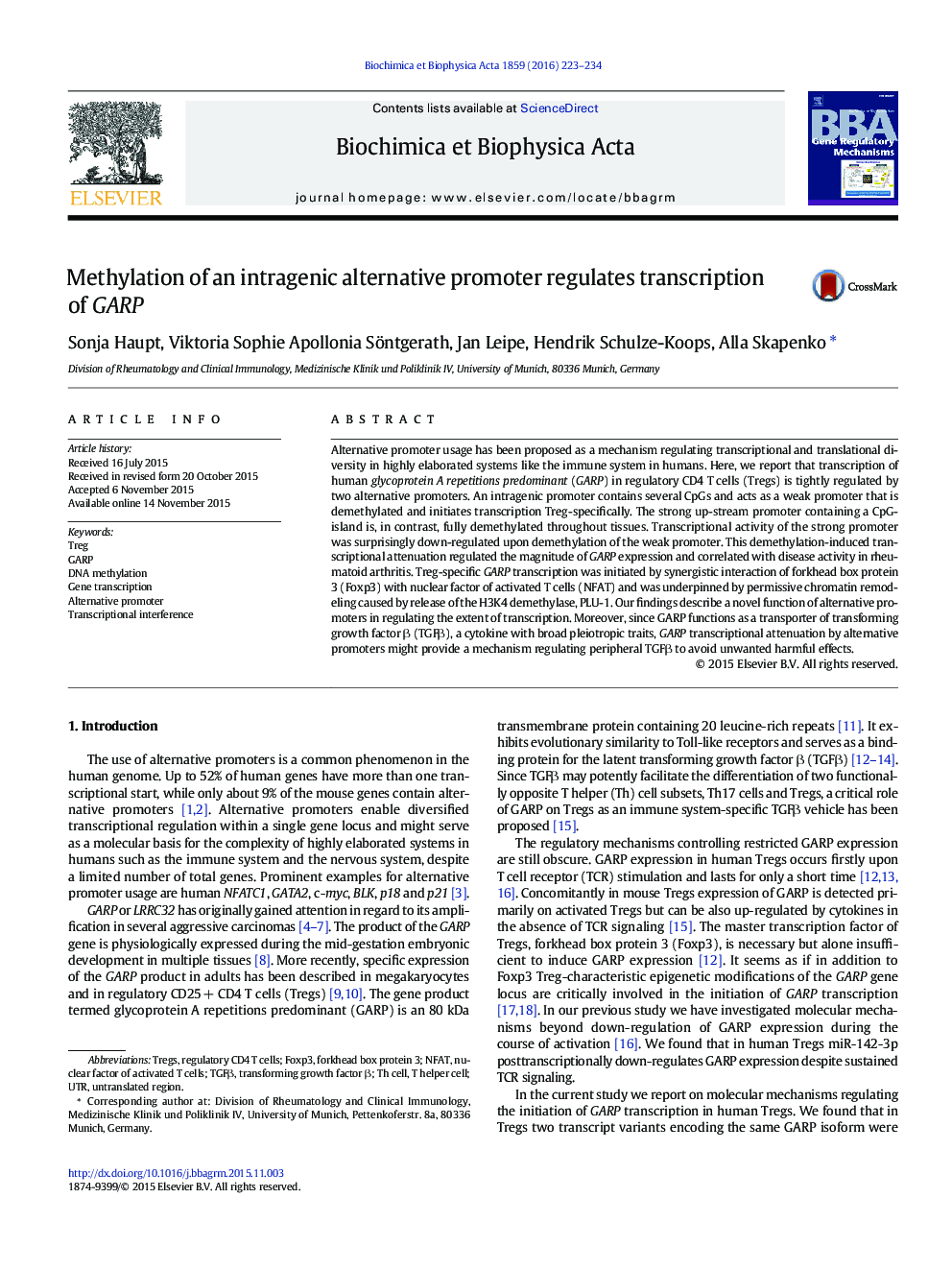| Article ID | Journal | Published Year | Pages | File Type |
|---|---|---|---|---|
| 1946335 | Biochimica et Biophysica Acta (BBA) - Gene Regulatory Mechanisms | 2016 | 12 Pages |
•Human GARP is expressed from two alternative promoters.•Methylation of the intragenic promoter regulates GARP transcription magnitude.•Synergistic interactions between NFAT and Foxp3 determine Treg-specific GARP expression.
Alternative promoter usage has been proposed as a mechanism regulating transcriptional and translational diversity in highly elaborated systems like the immune system in humans. Here, we report that transcription of human glycoprotein A repetitions predominant (GARP) in regulatory CD4 T cells (Tregs) is tightly regulated by two alternative promoters. An intragenic promoter contains several CpGs and acts as a weak promoter that is demethylated and initiates transcription Treg-specifically. The strong up-stream promoter containing a CpG-island is, in contrast, fully demethylated throughout tissues. Transcriptional activity of the strong promoter was surprisingly down-regulated upon demethylation of the weak promoter. This demethylation-induced transcriptional attenuation regulated the magnitude of GARP expression and correlated with disease activity in rheumatoid arthritis. Treg-specific GARP transcription was initiated by synergistic interaction of forkhead box protein 3 (Foxp3) with nuclear factor of activated T cells (NFAT) and was underpinned by permissive chromatin remodeling caused by release of the H3K4 demethylase, PLU-1. Our findings describe a novel function of alternative promoters in regulating the extent of transcription. Moreover, since GARP functions as a transporter of transforming growth factor β (TGFβ), a cytokine with broad pleiotropic traits, GARP transcriptional attenuation by alternative promoters might provide a mechanism regulating peripheral TGFβ to avoid unwanted harmful effects.
Graphical abstractA proposed model by which DNA methylation of GARP and Foxp3 regulate expression of GARP in Tregs by displacement of PLU-1 and recruitment of TCR-induced transcription factors.Figure optionsDownload full-size imageDownload high-quality image (241 K)Download as PowerPoint slide
